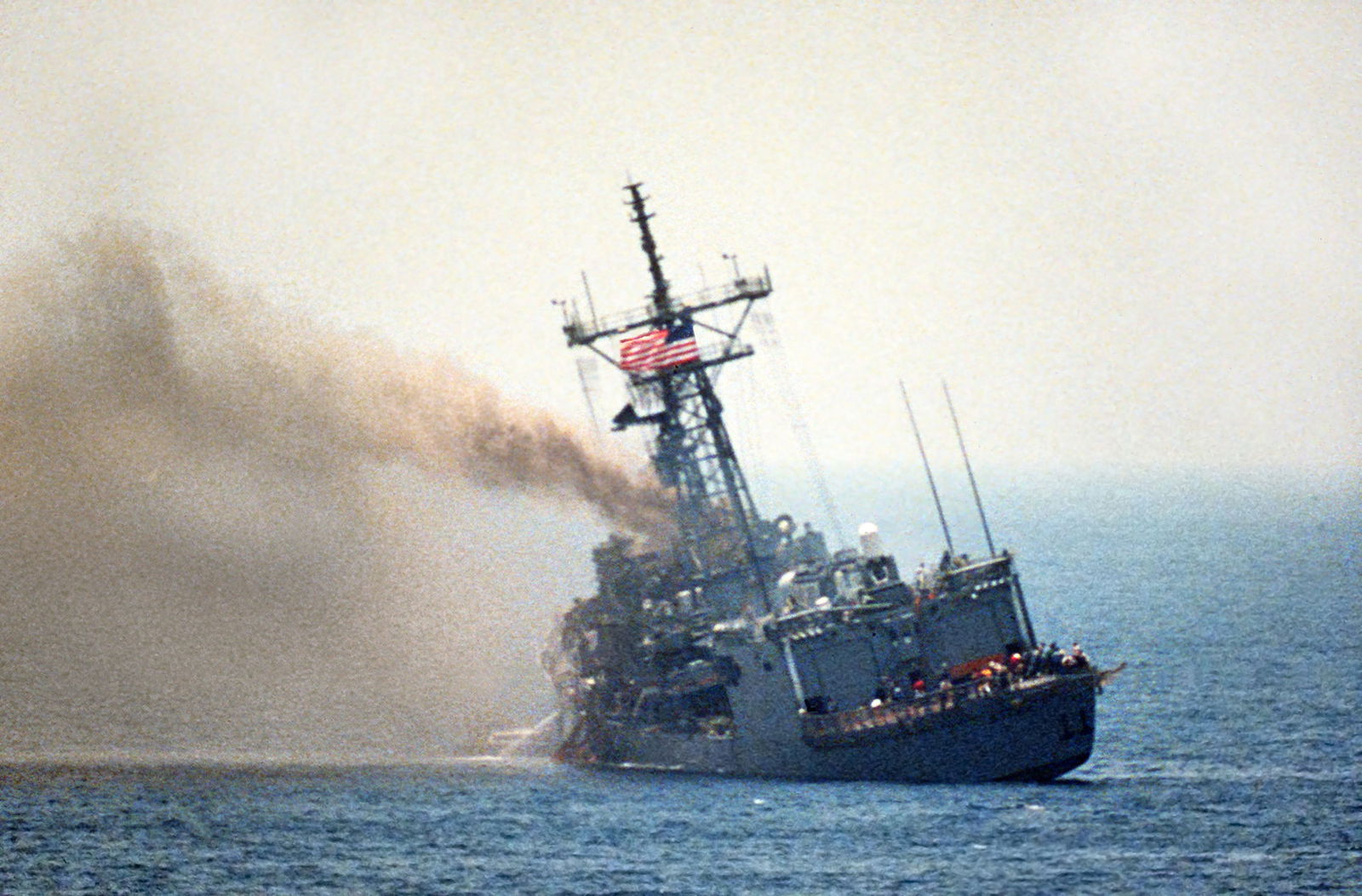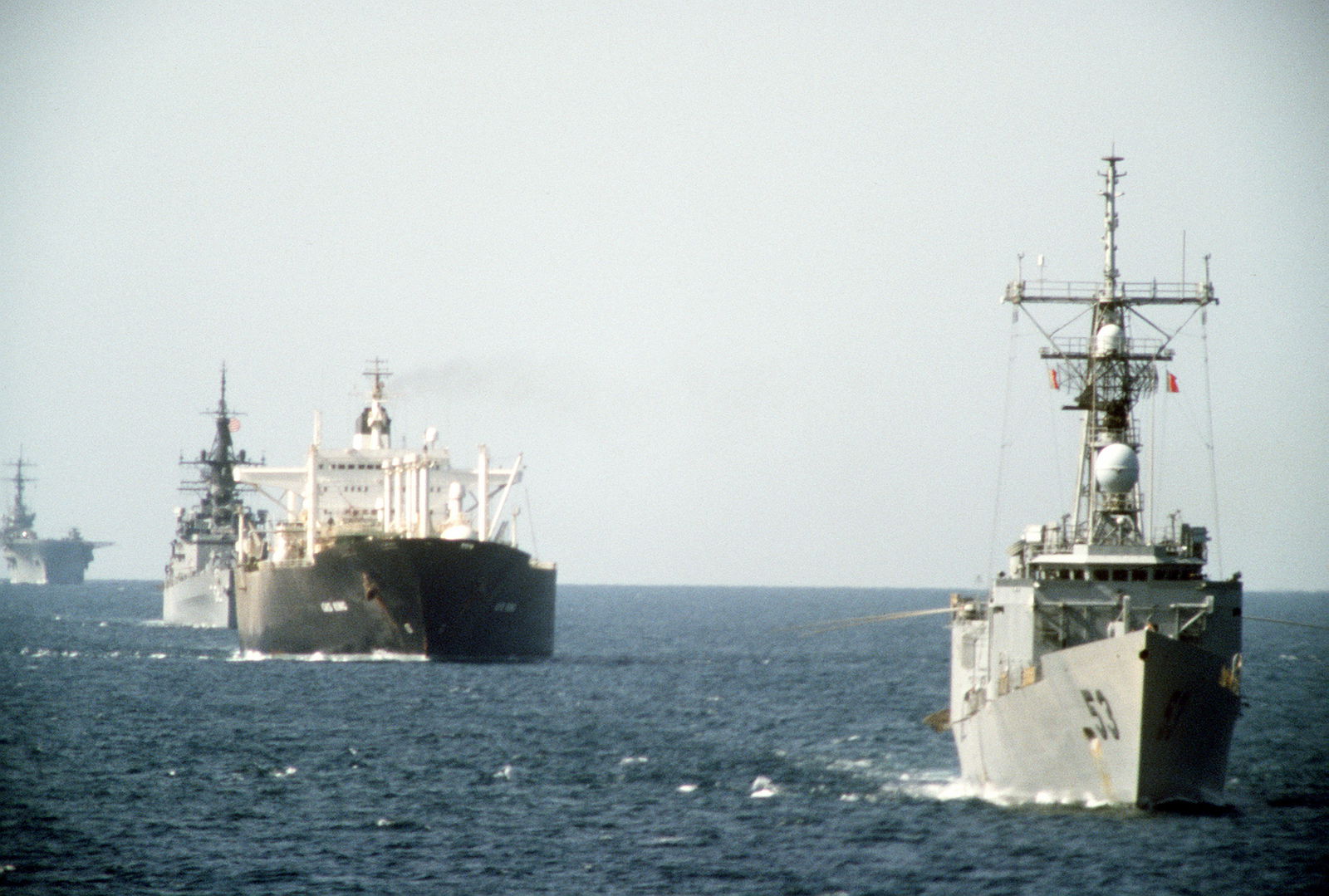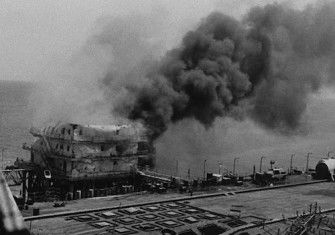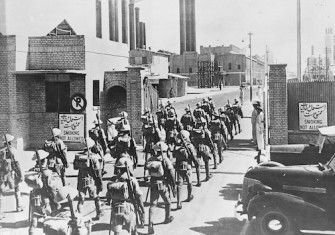The First Tanker War with Iran
If tensions between the US and Iran in the Persian Gulf lead to war, it will not be the first time. In 1987 and 1988, the US intervened to protect shipping from Iranian attacks.

The war between Iran and Iraq that lasted for most of the 1980s was one of the bloodiest conflicts of the late 20th century. Casualties for both armies numbered in the hundreds of thousands. At times the combat zones bore more than a passing resemblance to the battlefields of the First World War, with opposing trench systems arrayed along miles of front, massed infantry attacks pushed forward over the top and chemical weapon attacks an increasing method of both attack and defence. It was in the main a large-scale ground-war, with naval operations a decidedly subordinate field of operations.
Nevertheless, it is the naval aspect of the war – in particular the decision by both sides to attack enemy merchant shipping – which most resonates today as tensions between Iran and the US and its allies in the region once again begin to escalate.
The targeting by Iran and Iraq of each’s other’s merchant shipping and in particular oil tankers became known as the Tanker War. It represented the most sustained attack on merchant shipping since the Second World War and resulted in over 400 civilian seaman killed, hundreds of merchant ships damaged and substantial economic losses. Its broader significance lay in the danger such attacks posed to an international economy critically dependent on Gulf oil exports traversing the Straits of Hormuz chokepoint. Equally as significant was the Tanker War’s potential for escalation, as outside powers became drawn in to the conflict with the intention of ensuring freedom of navigation.
From the outset of hostilities in 1981 until 1983, Iraqi anti-shipping strikes were intermittent and primarily targeted Iranian ships in the northern Gulf. In these operations the Iraqi air force employed Mig 23s, Mirage F-1s and Super Frelon helicopters armed with Exocet anti-ship cruise missiles. To the extent that anti-shipping operations reflected broader Iraqi strategic thinking, the operations sought to support land operations in the wider theatre. Internationally flagged vessels nevertheless also found themselves embroiled in the conflict and, in May 1982, Atlas 1, a Turkish oil tanker loading Iranian oil at Kharg Island, became the first tanker to be hit in the war.
In 1984, France’s decision to supply Super Etendard aircraft enabled Baghdad to increase the range of its anti-shipping Exocet strikes, as well as to begin intensifying its operations against Iranian oil export facilities. The Iraqi anti-shipping escalation coincided with the fading of their hopes of an easy victory against the revolutionary regime in Tehran. Emerging stalemate and attrition on land against a potentially more powerful enemy meant that the Iraqis were forced to try a more indirect set of operations. In February 1985 a Liberian tanker, Neptunia, was hit by an Iraqi Exocet and became the first tanker to sink as a result of a missile strike.
While the weight of Iraqi efforts always remained ground based, these anti-shipping strikes, particularly against Iranian oil tankers and associated installations, were viewed as a means of bringing economic pressure to bear on the Iranian regime. The Iraqis may also have calculated that by attacking this vital Iranian supply line, it would force Iranian escalation in kind, which would ultimately lead to international intervention aimed at protecting maritime freedom. Regional and international intervention was regarded by Saddam Hussein as the one means of protecting his rule against an increasingly resurgent Iran.
In 1984 Iran indeed began to respond to this Iraqi escalation with its own attacks on merchant shipping linked to Iraq, including Gulf state and other international flagged shipping. Iranian strategy aimed at punishing Iraq and its Gulf allies while at the same compelling Iraq to desist from its anti-shipping campaign.
Lacking the sophisticated Exocet systems, the Iranians relied on a range of smaller payload weapons, such as AS 12s and Mavericks. The large size of oil tankers enabled such vessels to generally sustain the Iranian strikes (most did not sink) but accommodation blocks proved vulnerable and when attacked resulted in seamen casualties. It was not until 1987 that the Iranians began to deploy an effective dedicated anti-shipping missile in the form of the Chinese CSSC-2 Silkworm missile.

As Iran augmented its capabilities and expanded its targeting, international shipping began to feel the effects. Particularly hard hit were Iraq’s Gulf neighbours whose shipping began to suffer from Iranian attacks. Kuwaiti authorities felt especially vulnerable and called upon the international community to reflag Kuwaiti vessels as a deterrent to Iranian strikes. While western countries at first prevaricated, the assault on international shipping and the danger of Iranian actions causing the potential closure of the Straits of Hormuz ultimately resulted in US led naval intervention in 1987.
US naval intervention into Gulf waters carried its own dangers. Even before the beginning of the reflagging exercise, whereby Kuwaiti ships were reflagged as American vessels and escorted up and down the Gulf by the US navy, American forces had already suffered casualties. In May 1987 the guided missile frigate USS Stark suffered 37 dead following an apparently accidental Iraqi Exocet strike. Ironically it was the Iraqi attack on the USS Stark that helped pressurise Washington into inserting its naval forces into the Gulf so as to protect international shipping against Iranian strikes.
American intervention ultimately helped contain Iranian anti-shipping activities, ensured freedom of movement for international shipping in the Gulf and eventually also increased pressure on Tehran to seek peace with its neighbour. Significantly, US involvement did not go unopposed by the Iranians and the use of anti-shipping mines initially proved a particular challenge to American forces. This stage of the war witnessed clashes between US and Iranian forces, including the mining of the USS Samuel B. Roberts, the sinking by US forces of Iranian frigates and the accidental shooting down of an Iranian civilian airliner. These incidents always risked broader escalation but, in the end, the conflict was contained.
The shift in the balance of forces in the Gulf resulting from US involvement was one of the reasons forcing Iran to cease hostilities in 1988.
Ultimately, the Tanker War did not lead to the closing of the Straits of Hormuz, nor did it significantly impact oil exports from the Gulf or result in sustained increases in the price of oil. According to some estimates the combined anti-shipping campaigns of both Iran and Iraq never disrupted more than two per cent of ships in the Gulf.
Since these battles in the 1980s, the Iranian Revolutionary Guard has invested heavily in a range of anti-shipping capabilities including, small submarines, mines, anti-shipping weaponry and large numbers of fast attack boats geared towards swarming tactics. The threat to international shipping and freedom of movement through the Straits of Hormuz remains ever present. However in the face of dedicated US and international counter-measures, the ability of Iran to close the Straits for long periods of time remains doubtful.
Martin S. Navias is lecturer at the Department of War Studies, King’s College London.
A longer version of this article was published in the August 2019 print edition of History Today. You can read this here (requires subscription).






